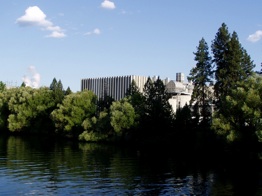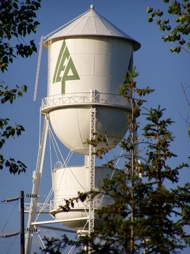“Q: Biggest threat to the river right now, in your opinion?
“A: Toxics. It's not even on the horizon yet. I include in that PCBs and the heavy metals. There is huge pollution from PBDEs, the flame retardants, that are used in upholstery and computer manufacturing. Turns out we have high readings of PBDEs in the Spokane River. I'm not sure where they've come from.
“The PCBs are a combination of historic practices from some kind of armory or World War II ordinance station or weapons development program out in the Valley. There are PCBs from that. Avista's hydraulic equipment. PCBs have been used in lubricants traditionally. Lots of PCBs floating beneath Kaiser. And Inland Empire Paper is a current discharger of PCBs to the river that we heard is coming from a paper that is being recycled at the plant that has yellow dye in it that is apparently manufactured elsewhere in the world.
“PBDEs, not sure. Computer manufacturers in the Valley? We don't even know. At this point, we have the data showing that they are in the sediments. How we're going to deal with these and clean these up will be a huge challenge for this community.
“The PCB TMDL is on the horizon. Ecology has been doing the technical assessment. It is now at least 15 months behind schedule.”
_____________
Interview with Rachael Paschal Osborn,
Environmental lawyer a 'voice of the wilderness'
in the series:
Rebecca Nappi, Spokane River Dialogues
Spokesman Review Mar 5, 2006





